| Research articles
|
| Wöhrl T, Richter A, Guo S, Reinhardt L, Nowotny M and Blickhan R (2021), "Comparative analysis of a geometric and an adhesive righting strategy against toppling in inclined hexapedal locomotion", Journal of Experimental Biology. Vol. 224(15).
[Abstract] [BibTeX] [DOI] [Data] [Code]
|
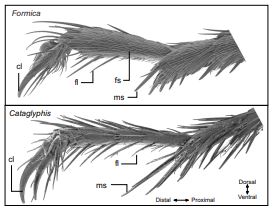
|
| Abstract: Animals are known to exhibit different walking behaviors in hilly habitats. For instance, cats, rats, squirrels, tree frogs, desert iguana, stick insects and desert ants were observed to lower their body height when traversing slopes, whereas mound-dwelling iguanas and wood ants tend to maintain constant walking kinematics regardless of the slope. This paper aims to understand and classify these distinct behaviors into two different strategies against toppling for climbing animals by looking into two factors: (i) the torque of the center of gravity (CoG) with respect to the critical tipping axis, and (ii) the torque of the legs, which has the potential to counterbalance the CoG torque. Our comparative locomotion analysis on level locomotion and inclined locomotion exhibited that primarily only one of the proposed two strategies was chosen for each of our sample species, despite the fact that a combined strategy could have reduced the animal's risk of toppling over even more. We found that Cataglyphis desert ants (species Cataglyphis fortis) maintained their upright posture primarily through the adjustment of their CoG torque (geometric strategy), and Formica wood ants (species Formica rufa), controlled their posture primarily by exerting leg torques (adhesive strategy). We further provide hints that the geometric strategy employed by Cataglyphis could increase the risk of slipping on slopes as the leg-impulse substrate angle of Cataglyphis hindlegs was lower than that of Formica hindlegs. In contrast, the adhesion strategy employed by Formica front legs not only decreased the risk of toppling but also explained the steeper leg-impulse substrate angle of Formica hindlegs which should relate to more bending of the tarsal structures and therefore to more microscopic contact points, potentially reducing the risk of hindleg slipping. |
BibTeX:
@article{woh21,
author = {Wöhrl, Toni and Richter, Adrian and Guo, Shihui and Reinhardt, Lars and Nowotny, Manuela and Blickhan, Reinhard},
title = {Comparative analysis of a geometric and an adhesive righting strategy against toppling in inclined hexapedal locomotion},
journal = {Journal of Experimental Biology},
publisher = {The Company of Biologists Ltd},
year = {2021},
volume = {224},
url = {https://journals.biologists.com/jeb/article/224/15/jeb242677/271172},
doi = {10.1242/jeb.242677}
}
|
| Li C, Wöhrl T, Lam HK and Full RJ (2019), "Cockroaches use diverse strategies to self-right on the ground", Journal of Experimental Biology. Vol. 222(15), pp. 1618-1625.
[Abstract] [BibTeX] [DOI] [URL] [PDF]
[Video 1] [Video 2] [Video 3]
|
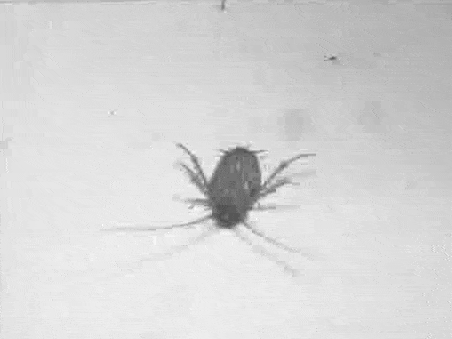
|
| Abstract: Terrestrial animals often must self-right from an upside-down orientation on the ground to survive. Here, we compared self-righting strategies of the Madagascar hissing, American and discoid cockroaches on a challenging flat, rigid, low-friction surface to quantify the mechanical principles. All three species almost always self-righted (97% probability) when given time (30 s), frequently self-righted (63 on the first attempt, and on that attempt did so in 1 s or less. When successful, two of the three species gained and used pitch and/or roll rotational kinetic energy to overcome potential energy barriers (American 63% of all attempts and discoid 78. By contrast, the largest, heaviest, wingless cockroach (Madagascar hissing) relied far less on the energy of motion and was the slowest to self-right. Two of the three species used rolling strategies to overcome low potential energy barriers. Successful righting attempts had greater rolling rotation than failed attempts as the center of mass rose to the highest position. Madagascar hissing cockroaches rolled using body deformation (98% of all trials) and the American cockroach rolled using leg forces (93. By contrast, the discoid cockroach overcame higher and a wider range of potential energy barriers with simultaneous pitching and rolling using the wings (46% of all trials) and legs (49 equally to self-right. Our quantification revealed the performance advantages of using rotational kinetic energy to overcome the potential energy barrier and rolling more to lower it, while maintaining diverse strategies for ground-based self-righting. |
BibTeX:
@article{li19a,
author = {Li, Chen and Wöhrl, Toni and Lam, Han K. and Full, Robert J.},
title = {Cockroaches use diverse strategies to self-right on the ground},
journal = {Journal of Experimental Biology},
publisher = {The Company of Biologists Ltd},
year = {2019},
volume = {222},
pages = {1618--1625},
number = {15},
url = {https://jeb.biologists.org/content/222/15/jeb186080},
doi = {10.1242/jeb.186080}
}
|
| Puta C, Steidten T, Baumbach P, Wöhrl T, May R, Kellmann M, Herbsleb M, Gabriel B, Weber S, Granacher U and Gabriel HHW (2018), "Standardized Assessment of Resistance Training-Induced Subjective Symptoms and Objective Signs of Immunological Stress Responses in Young Athletes", Frontiers in Physiology. Vol. 9, pp. 698.
[Abstract] [BibTeX] [DOI] [URL] [PDF]
|
| Abstract: From a health and performance-related perspective, it is crucial to evaluate subjective symptoms and objective signs of acute training-induced immunological responses in young athletes. The limited number of available studies focused on immunological adaptations following aerobic training. Hardly any studies have been conducted on resistance-training induced stress responses. Therefore, the aim of this observational study was to investigate subjective symptoms and objective signs of immunological stress responses following resistance training in young athletes. Fourteen (7 females and 7 males) track and field athletes with a mean age of 16.4 years and without any symptoms of upper or lower respiratory tract infections participated in this sudy. Over a period of seven days, subjective symptoms using the Acute Recovery and Stress Scale (ARSS) and objective signs of immunological responses using capillary blood markers were taken each morning and after the last training session. Differences between morning and evening sessions and associations between subjective and objective parameters were analyzed using Generalized Estimating Equations (GEE). In post-hoc analyses, daily change-scores of the ARSS dimensions were compared between participants and revealed specific changes in objective capillary blood samples. In the GEE models, recovery (ARSS) was characterized by a significant decrease while stress (ARSS) showed a significant increase between morning and evening-training sessions. A concomitant increase in White Blood Cell Count (WBC), granulocytes (GRAN) and percentage shares of granulocytes (GRAN%) was found between morning and evening sessions. Of note, percentage shares of lymphocytes (LYM%) showed a significant decrease. Furthermore, using multivariate regression analyses, we identified that recovery was significantly associated with LYM%, while stress was significantly associated with WBC and GRAN%. Post-hoc analyses revealed significantly larger increases in participants’ stress dimensions who showed increases in GRAN%. For recovery, significantly larger decreases were found in participants with decreases in LYM% during recovery. More specifically, daily change-scores of the recovery and stress dimensions of the ARSS were associated with specific changes in objective immunological markers (GRAN%, LYM%) between morning and evening-training sessions. Our results indicate that changes of subjective symptoms of recovery and stress dimensions using the ARSS were associated with specific changes in objectively measured immunological markers. |
BibTeX:
@article{put18a,
author = {Puta, Christian and Steidten, Thomas and Baumbach, Philipp and Wöhrl, Toni and May, Rico and Kellmann, Michael and Herbsleb, Marco and Gabriel, Brunhild and Weber, Stephanie and Granacher, Urs and Gabriel, Holger H. W.},
title = {Standardized Assessment of Resistance Training-Induced Subjective Symptoms and Objective Signs of Immunological Stress Responses in Young Athletes},
journal = {Frontiers in Physiology},
year = {2018},
volume = {9},
pages = {698},
url = {https://www.frontiersin.org/article/10.3389/fphys.2018.00698},
doi = {10.3389/fphys.2018.00698}
}
|
| Guo S, Lin J, Wöhrl T and Liao M (2018), "A Neuro-Musculo-Skeletal Model for Insects With Data-driven Optimization", Scientific Reports., 2, 2018. Vol. 8(1), pp. 2129.
[Abstract] [BibTeX] [DOI] [URL] [PDF] [Video]
|
| Abstract: Simulating the locomotion of insects is beneficial to many areas such as experimental biology, computer animation and robotics. This work proposes a neuro-musculo-skeletal model, which integrates the biological inspirations from real insects and reproduces the gait pattern on virtual insects. The neural system is a network of spiking neurons, whose spiking patterns are controlled by the input currents. The spiking pattern provides a uniform representation of sensory information, high-level commands and control strategy. The muscle models are designed following the characteristic Hill-type muscle with customized force-length and force-velocity relationships. The model parameters, including both the neural and muscular components, are optimized via an approach of evolutionary optimization, with the data captured from real insects. The results show that the simulated gait pattern, including joint trajectories, matches the experimental data collected from real ants walking in the free mode. The simulated character is capable of moving at different directions and traversing uneven terrains. |
BibTeX:
@article{guo18a,
author = {Guo, Shihui and Lin, Juncong and Wöhrl, Toni and Liao, Minghong},
title = {A Neuro-Musculo-Skeletal Model for Insects With Data-driven Optimization},
journal = {Scientific Reports},
year = {2018},
volume = {8},
number = {1},
pages = {2129},
doi = {10.1038/s41598-018-20093-x}
}
|
| Wöhrl T, Reinhardt L and Blickhan R (2017), "Propulsion in hexapod locomotion: how do desert ants traverse slopes?", Journal of Experimental Biology., 2, 2017. Vol. 220(9), pp. 1618-1625.
[Abstract] [BibTeX] [DOI] [URL] [PDF] [Data] [Code] [Video]
|
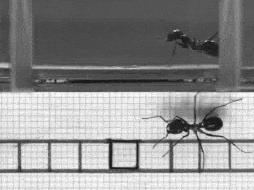
|
| Abstract:The employment of an alternating tripod gait to traverse uneven terrains is a common characteristic shared among many Hexapoda. Because this could be one specific cause for their ecological success, we examined the alternating tripod gait of the desert ant Cataglyphis fortis together with their ground reaction forces and weight-specific leg impulses for level locomotion and on moderate ({\textpm}30~deg) and steep ({\textpm}60~deg) slopes in order to understand mechanical functions of individual legs during inclined locomotion. There were three main findings from the experimental data. (1) The hind legs acted as the main brake (negative weight-specific impulse in the direction of progression) on both the moderate and steep downslopes while the front legs became the main motor (positive weight-specific impulse in the direction of progression) on the steep upslope. In both cases, the primary motor or brake was found to be above the centre of mass. (2) Normalised double support durations were prolonged on steep slopes, which could enhance the effect of lateral shear loading between left and right legs with the presence of direction-dependent attachment structures. (3) The notable directional change in the lateral ground reaction forces between the moderate and steep slopes implied the utilisation of different coordination programs in the extensor{\textendash}flexor system. |
BibTeX:
@article{woeh17a,
author = {Toni Wöhrl and Lars Reinhardt and Reinhard Blickhan},
title = {Propulsion in hexapod locomotion: how do desert ants traverse slopes?},
journal = {Journal of Experimental Biology},
publisher = {The Company of Biologists},
year = {2017},
volume = {220},
number = {9},
pages = {1618--1625},
url = {http://jeb.biologists.org/content/220/9/1618},
doi = {10.1242/jeb.137505}
}
|
| Data
|
| Wöhrl T, Reinhardt L and Blickhan R (2017), "Data from: Propulsion in hexapod locomotion: how do desert ants traverse slopes? Dryad Digital Repository.". 2, 2017.
[BibTeX] [DOI] [Code]
|

|
BibTeX:
@misc{woeh17b,
author = {Toni Wöhrl and Lars Reinhardt and Reinhard Blickhan},
title = {Data from: Propulsion in hexapod locomotion: how do desert ants traverse slopes? Dryad Digital Repository.},
year = {2017},
doi = {10.5061/dryad.j4594}
}
|
| Thesis
|
| Wöhrl T (2019), "Kanalisieren von Begriffsfluten mit Wikiversity am Beispiel der 2-dimensionalen Mechanik in Klasse 11". Thesis at: Institut für Qualitätsentwicklung an Schulen Schleswig-Holstein (IQSH). Gutachterin: M. Tesch. Eingereicht zur Zweiten Staatsprüfung am 30. Januar 2019.
[BibTeX]
|
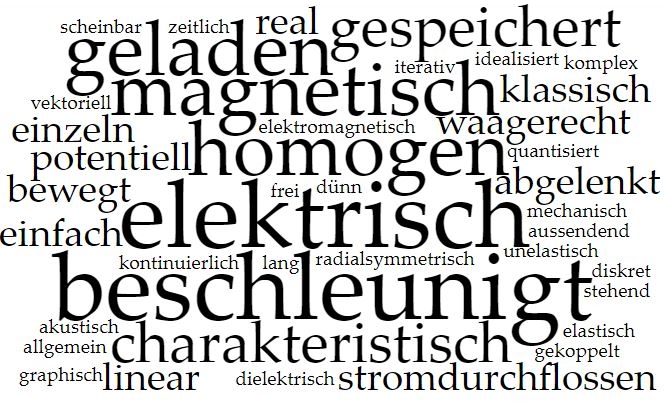
|
BibTeX:
@thesis{woeh19a,
author = {Toni Wöhrl},
title = {Kanalisieren von Begriffsfluten mit Wikiversity am Beispiel der 2-dimensionalen Mechanik in Klasse 11},
school = {Institut für Qualitätsentwicklung an Schulen Schleswig-Holstein (IQSH)},
year = {2019},
note = {Gutachterin: Tesch A. Eingereicht zur Zweiten Staatsprüfung am 30. Januar 2019.},
}
|
| Wöhrl T (2010), "Humane Anpassungsstrategien an parallele Fußgelenksteifigkeiten. Kompensieren Menschen die Gelenksteifigkeit einer Fußgelenkorthese durch muskuläre Steifigkeitserniedrigung?". Thesis at: Friedrich-Schiller-Universität Jena. Gutachter: Seyfarth A and Grimmer S. Eingereicht als Diplomarbeit am 3. Dezember 2010.
[BibTeX] [DOI] [URL] [PDF]
|
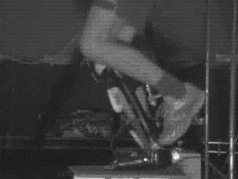
|
BibTeX:
@mastersthesis{woh10a,
author = {Wöhrl, Toni},
title = {Humane Anpassungsstrategien an parallele Fußgelenksteifigkeiten. Kompensieren Menschen die Gelenksteifigkeit einer Fußgelenkorthese durch muskuläre Steifigkeitserniedrigung?},
publisher = {Thüringer Universitäts- und Landesbibliothek Jena},
school = {Friedrich-Schiller-Universität Jena},
year = {2010},
doi = {10.22032/dbt.18758},
note = {Gutachter: Seyfarth A and Grimmer S. Eingereicht als Diplomarbeit am 3. Dezember 2010.},
eprint = {http://www.db-thueringen.de/servlets/DerivateServlet/Derivate-23713/DiplomarbeitWoehrl.pdf},
url = {https://www.db-thueringen.de/receive/dbt_mods_00018758},
}
|
|
| Conference contributions (presenter)
|
| Wöhrl T (2016), "Corpus generation and key-phrase extraction: a pragmatic workflow.", Conference "Actual Problems of Cognitive and Applied linguistics" at Azerbaijan University of Languages and Institute of Philology of Siberian Branch of Russian Academy of Sciences on 20-21 October 2016 in Baku city of Azerbaijan.
[BibTeX]
|
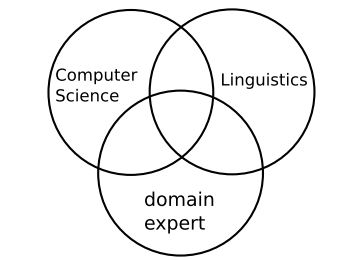
|
BibTeX:
@misc{woeh16b,
author = {Toni Wöhrl},
title = {Corpus generation and key-phrase extraction: a pragmatic workflow.},
howpublished = {Conference "Actual Problems of Cognitive and Applied linguistics" at Azerbaijan University of Languages and Institute of Philology of Siberian Branch of Russian Academy of Sciences on 20-21 October 2016 in Baku city of Azerbaijan},
year = {2016}
}
|
| Wöhrl T (2016), "Ants walking on slopes", Motions Systems Perspectives Conference in Jena. 21 July 2016.
[BibTeX] [PDF] [Video]
|
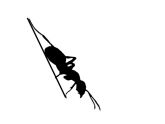
|
BibTeX:
@misc{woeh16a,
author = {Toni Wöhrl},
title = {Ants walking on slopes},
howpublished = {Motions Systems Perspectives Conference in Jena. 21 July 2016.},
year = {2016}
}
|
| Conference contributions (co-authorship)
|
| Schlögl B, Seidl T, Wöhrl T, Bruckmann T and Schramm D (2018), "Odometrie bei Laufrobotern nach Vorbild der Entfernungs- und Steigungsmessung von Wüstenameisen Cataglyphis spec.",Vierte IFToMM D-A-CH Konferenz 2018 15./16. Februar 2018, EPFL Lausanne.
[BibTeX] [DOI] [URL]
|
BibTeX:
@inproceedings{sch18a,
author = {Barbara Schlögl and Tobias Seidl and Toni Wöhrl and Tobias Bruckmann and Dieter Schramm},
editor = {IFToMM D-A-CH},
title = {Odometrie bei Laufrobotern nach Vorbild der Entfernungs- und Steigungsmessung von Wüstenameisen Cataglyphis spec.},
booktitle = {Vierte IFToMM D-A-CH Konferenz 2018 15./16. Februar 2018, EPFL Lausanne},
year = {2018},
url = {http://duepublico.uni-duisburg-essen.de/servlets/DocumentServlet?id=45207},
doi = {10.17185/duepublico/45207}
}
|
| Li C, Wöhrl T, Lam H and Full R (2015), "Abstract: B47.00003: Self-righting behavior of cockroaches", In Bulletin of the American Physical Society March Meeting 2015. San Antonio, Texas, 3, 2015. Vol. 60(1)
[Abstract] [BibTeX] [URL]
|
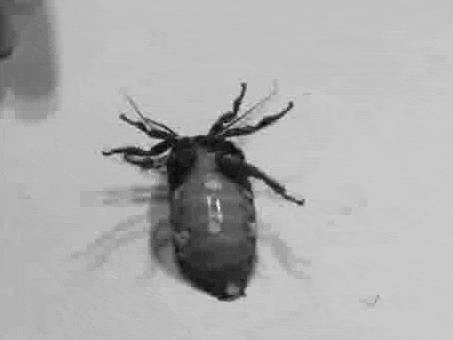 |
| Abstract: Small insects must be able to right themselves from an upside-down orientation to survive. Previous studies described diverse self-righting strategies in insects. Here, we compare the self-righting behaviors in three cockroach species on a flat, rigid ground to begin to reveal what governs the choice of dominant behaviors. All species self-righted successfully (75 +/- 11 % probability) and quickly (as low as 140 ms and typically within 2 s). The smallest winged American cockroach, which has the most elongate, least flattened body, and longest legs, primarily pushed legs against the ground to roll its body to the side to self-right (relative frequency = 93%). The largest wingless Madagascar hissing cockroach with the shortest legs primarily (84%) hyperextended body to roll to the side and then rubbed its legs on the ground to self-right. The intermediate winged discoid cockroach, which has the least elongate, most flattened body, more often (57%) abducted wings and flexed body to raise center of mass and reduce ground contact and rotated about the wing edges to self-right. We hypothesize that, given morphological and physiological constraints, the gravitational potential energy landscape resulting from the animals' body/appendage-ground interaction governs their dominant behaviors. Our study provides inspiration for robotics, as many current terrestrial robots have rigid, cuboidal bodies which hinder self-righting. |
BibTeX:
@inproceedings{li15b,
author = {Chen Li and Toni Wöhrl and Han Lam and Robert Full},
title = {Abstract: B47.00003: Self-righting behavior of cockroaches},
booktitle = {Bulletin of the American Physical Society March Meeting 2015},
year = {2015},
volume = {60},
number = {1},
url = {http://meetings.aps.org/link/BAPS.2015.MAR.B47.3}
}
|
| Nötzel D, Anders C, Wagner H, Gabriel B, Liebetrau A, Zeh S, Wö[h]rl T, Gabriel H and Puta C (2012), "Veränderte reflektorische Kontrolle der abdominalen Muskulatur bei Patienten mit chronischem unspezifischem Rückenschmerz während externer Entlastungsstörungen" Gewinn des Posterpreises zum Deutschen Schmerzkongress 2012 in Mannheim.
[BibTeX]
|
BibTeX:
@proceedings{noe12a,
author = {Nötzel, D. and Anders, C. and Wagner, H. and Gabriel, B. and Liebetrau, A. and Zeh, S. and Wö[h]rl, T. and Gabriel, H. and Puta, C.},
title = {Veränderte reflektorische Kontrolle der abdominalen Muskulatur bei Patienten mit chronischem unspezifischem Rückenschmerz während externer Entlastungsstörungen},
year = {2012},
note = {Gewinn des Posterpreises zum Deutschen Schmerzkongress 2012 in Mannheim}
}
|
| Donath L, Nötzel D, Puta C, Herbsleb M, Mueller HJ, Wöhrl T and Gabriel HHW (2009), "Incremental exercise tests and mechanical work: Negligible interactions?", Book of Abstracts: VIth European Sports Medicine Congress. Vol. 8 Supplementum 11, pp. 198. Journal of Sports Science and Medicine.
[BibTeX] [URL]
|
BibTeX:
@incollection{don09a,
author = {Donath, Lars and Nötzel, Dirk and Puta, Christian and Herbsleb, Marco and Mueller, Hans Josef and Wöhrl, Toni and Gabriel, Holger H. W.},
editor = {Emin Ergen, Bülent Ülkar and Güner, Rü?tü},
title = {Incremental exercise tests and mechanical work: Negligible interactions?},
journal = {Book of Abstracts: VIth European Sports Medicine Congress},
publisher = {Journal of Sports Science and Medicine},
year = {2009},
volume = {8 Supplementum 11},
pages = {198},
url = {http://www.jssm.org/suppls/11/Suppl.11.pdf}
}viwe
|
| Miscellaneous talks, posters and reports
|
| Wöhrl, T (2019), "Risking rather tipping than sliding in traversing uneven habitats? Comparing adaptive locomotion strategies for two different ant species.", Vortrag im Rahmen des Institutskolloquium am Institut für Spezielle Zoologie und Evolutionsbiologie der FSU Jena am 19. November 2019
[BibTeX]
|
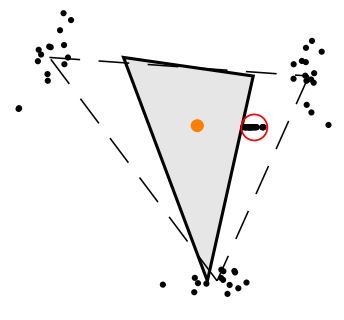
|
BibTeX
@Misc{woeh19b,
author = {Toni Wöhrl},
title = {Risking rather tipping than sliding in traversing uneven habitats? Comparing adaptive locomotion strategies for two different ant species.},
year = {2019},
date = {2019-11-19},
howpublished = {Vortrag im Rahmen des Institutskolloquium am Institut für Spezielle Zoologie und Evolutionsbiologie der FSU Jena am 19. November 2019}
}
|
| Bähr F, Puta C, Wöhrl T and Gabriel HHW (2018), "Einblicke in die Datenanalyse im Projekt 'Bewegte Kinder = Gesündere Kinder'", Landessportbund Thüringen e.V.
[BibTeX] [URL] [PDF]
|
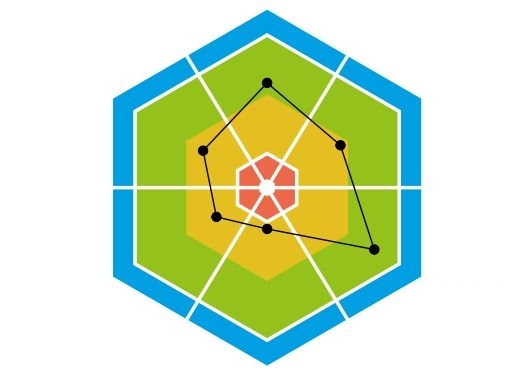
|
BibTeX
@online{baeh18a,
author = {Florian Bähr and Christian Puta and Toni Wöhrl and Holger H. W. Gabriel},
publisher = {Landessportbund Thüringen e.V.},
title = {Einblicke in die Datenanalyse im Projekt "Bewegte Kinder = Gesündere Kinder"},
year = {2018},
url = {https://www.thueringen-sport.de/fileadmin/user_upload/Einblicke_in_die_Datenanalyse__-_Uni_Jena.pdf}
}
|
| Wöhrl T (2015), "Symmetry and Locomotion", Doktorandenkolloquium des Instituts für Sportwissenschaften Jena (J-DOKS) am 11. Dezember 2015.
[BibTeX]
|
BibTeX:
@misc{woeh15b,
author = {Toni Wöhrl},
title = {Symmetry and Locomotion},
howpublished = {Doktorandenkolloquium des Instituts für Sportwissenschaften Jena (J-DOKS) am 11. Dezember 2015},
year = {2015}
}
|
| Wöhrl T (2015), "Literate Programming für Sportwissenschaftler", Doktorandenkolloquium des Instituts für Sportwissenschaften Jena (J-DOKS) am 11. Dezember 2015.
[BibTeX]
|
BibTeX:
@misc{woeh15c,
author = {Toni Wöhrl},
title = {Literate Programming für Sportwissenschaftler},
howpublished = {Doktorandenkolloquium des Instituts für Sportwissenschaften Jena (J-DOKS) am 11. Dezember 2015},
year = {2015}
}
|
| Wöhrl T (2013), "Bodenreaktionskräfte der Wüstenameise Cataglyphis fortis. Zwischenergebnisse.", Doktorandenkolloquium des Instituts für Sportwissenschaften Jena (J-DOKS) am 4. November 2013.
[BibTeX]
|
BibTeX:
@misc{woeh13a,
author = {Toni Wöhrl},
title = {Bodenreaktionskräfte der Wüstenameise Cataglyphis fortis. Zwischenergebnisse.},
howpublished = {Doktorandenkolloquium des Instituts für Sportwissenschaften Jena (J-DOKS) am 4. November 2013},
year = {2013}
}
|
| Wöhrl T (2012), "Ameisensport? Wie und warum untersuchen wir am Institut für Sportwissenschaften die Fortbewegung von Ameisen?!", Doktorandenkolloquium des Instituts für Sportwissenschaften Jena (J-DOKS) am 15. November 2012.
[BibTeX]
|
BibTeX:
@misc{woeh12a,
author = {Toni Wöhrl},
title = {Ameisensport? Wie und warum untersuchen wir am Institut für Sportwissenschaften die Fortbewegung von Ameisen?!},
howpublished = {Doktorandenkolloquium des Instituts für Sportwissenschaften Jena (J-DOKS) am 15. November 2012},
year = {2012}
}
|
| Wöhrl T (2011), "Maximal isometric force and electromyographic activity after fatigueing the Musculus gastrocnemius lateralis – A Preinvestigation", Doktorandenkolloquium des Instituts für Sportwissenschaften Jena (J-DOKS) am 20. November 2011.
[BibTeX]
|
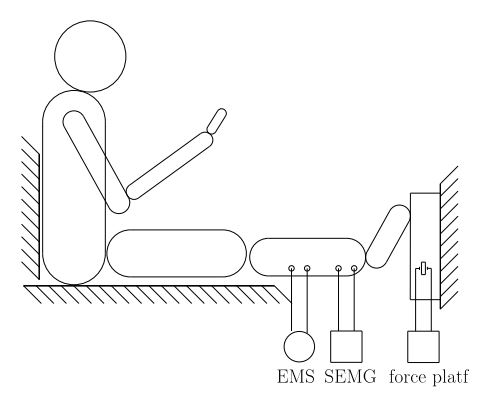
|
BibTeX:
@proceedings{woe11a,
author = {Wöhrl, Toni},
title = {Maximal isometric force and electromyographic activity after fatigueing the Musculus gastrocnemius lateralis – A Preinvestigation},
howpublished = {Doktorandenkolloquium des Instituts für Sportwissenschaften Jena (J-DOKS) 2011},
year = {2011}
}
|
| Wöhrl T (2011), "Differences in one- and two-legged hopping at different hopping frequencies", Doktorandenkolloquium des Instituts für Sportwissenschaften Jena (J-DOKS) am 20. November 2011.
[BibTeX]
|
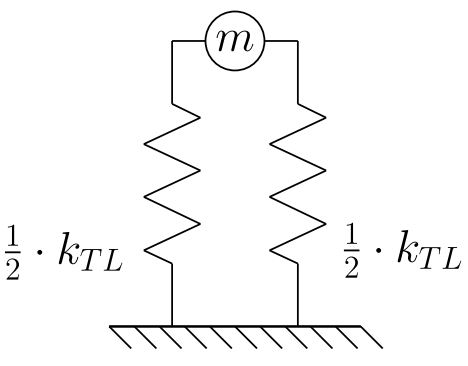
|
BibTeX:
@proceedings{woe11b,
author = {Wöhrl, Toni},
title = {Differences in one- and two-legged hopping at different hopping frequencies},
howpublished = {Doktorandenkolloquium des Instituts für Sportwissenschaften Jena (J-DOKS) am 20. November 2011},
year = {2011}
}
|
| Wöhrl T (2011), "Integrieren oder ignorieren Menschen eine Fußgelenkorthese in einen vorgegebenen Bewegungsablauf", Doktorandenkolloquium des Instituts für Sportwissenschaften Jena (J-DOKS) am 20. November 2011.
[BibTeX]
|

|
BibTeX:
@proceedings{woe11c,
author = {Wöhrl, Toni},
title = {Integrieren oder ignorieren Menschen eine Fußgelenkorthese in einen vorgegebenen Bewegungsablauf},
howpublished = {Doktorandenkolloquium des Instituts für Sportwissenschaften Jena (J-DOKS) am 20. November 2011},
year = {2011}
}
|













